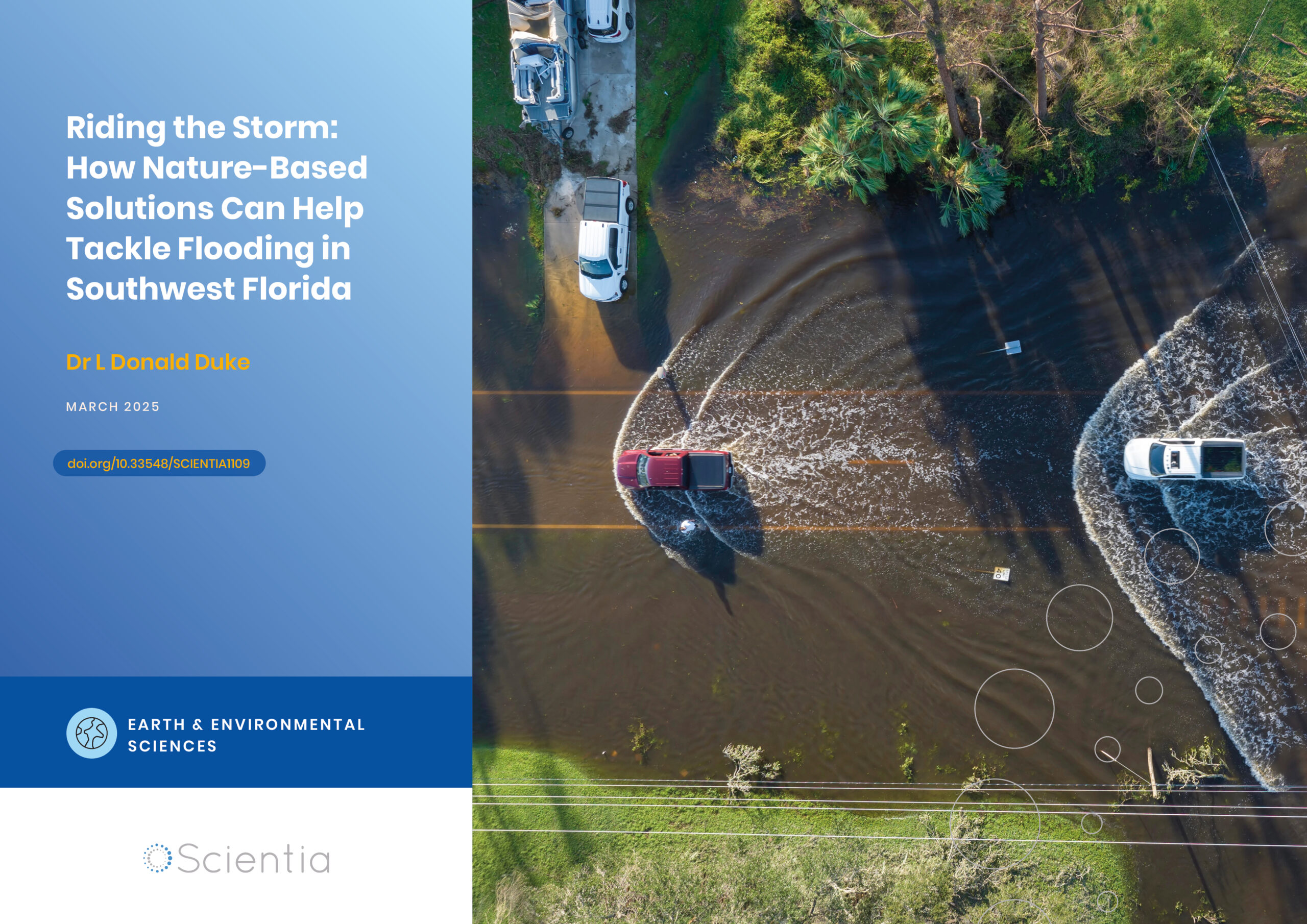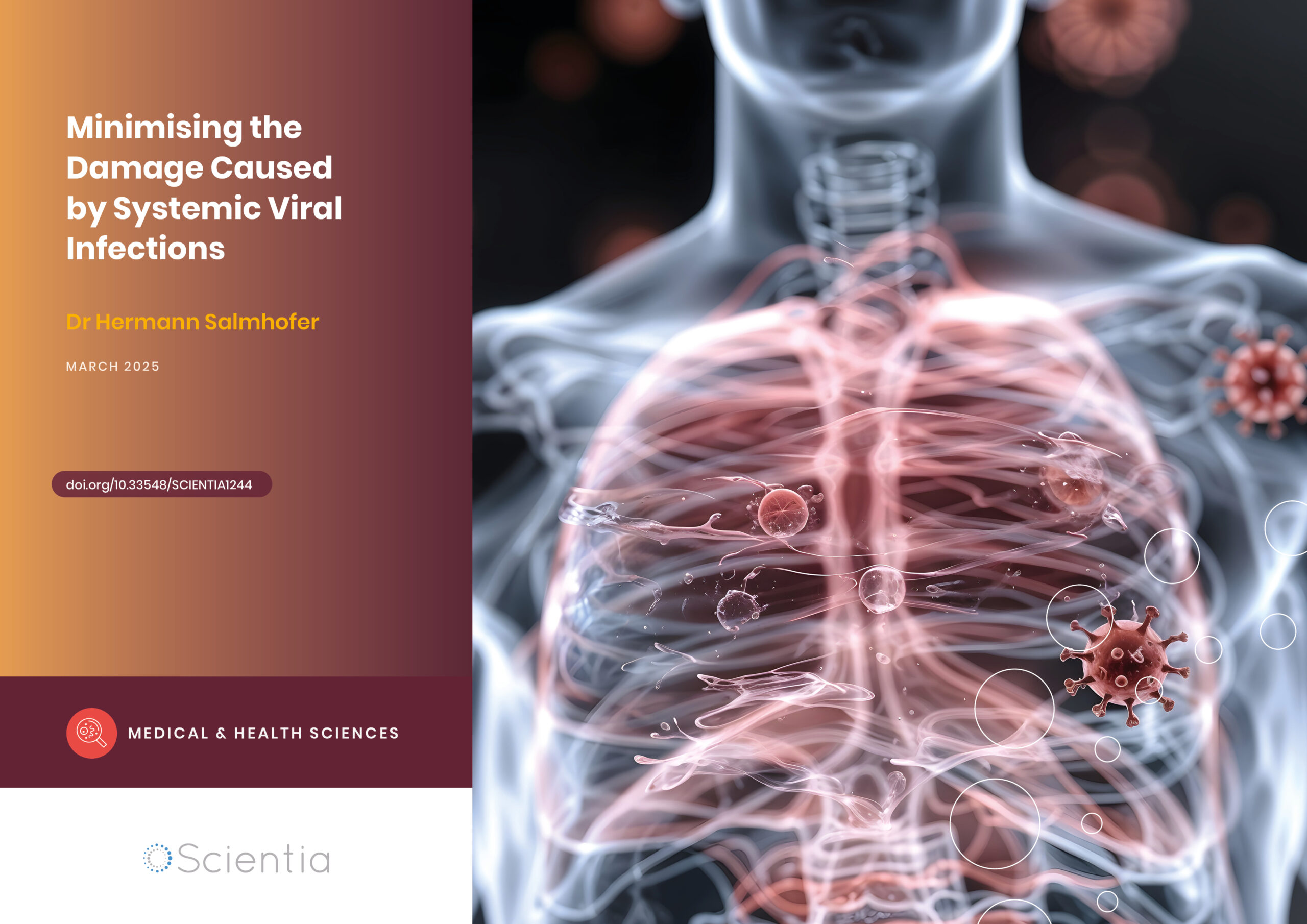Dr Bryce Falk – Fighting Plant Disease with Virus-based Gene Technology
Plant pathogens transmitted by insect vectors can have devastating consequences for farmers across the globe. Huanglongbing disease of citrus trees and zebra chip disease of potatoes are both caused by bacteria transmitted by specific psyllid insect species, and have the potential to destroy entire crops, causing enormous economic losses. Conventional control methods rely on pesticides, but these can have adverse effects on the environment. In addition, resistance to these chemicals is on the rise in many pest species. Dr Bryce Falk and his plant pathology team at the University of California, Davis aim to solve this problem by developing highly targeted psyllid control methods using virus-based gene technologies.
Viruses in Gene Technologies
Viruses are so tiny that you may only remember their existence when you develop that peculiar throat tickle that signals an impending cold. However, viruses are everywhere. As the most numerous microbes on the planet, they interact with every kind of organism, including bacteria and even other viruses. Recent estimates suggest that only a tiny fraction of the total number of viruses have been discovered so far. Many viruses do not cause disease in their hosts, and thus it is only with recent technological advancements that these unknown viruses have begun to be discovered.
Most viruses are highly adapted to a small number of potential hosts, sometimes only infecting a single host species. They multiply by hijacking the processes within the host’s own cells, forcing them to make new virus particles. Their method of replication, along with their susceptibility to manipulation by gene technologies, makes viruses valuable tools to transfer desirable characteristics directly to the cells of their hosts.
Virus-mediated gene technology shows tremendous promise in agriculture. Using precisely altered viruses, desirable traits such as resistance to pests or diseases can be conferred to plants. Conventionally, farmers have relied on the use of insecticides to control pest insect populations, while using antibiotics and fungicides to treat plant diseases caused by bacteria and fungi, respectively. However, these chemicals have a tendency to find their way into the surrounding ecosystem and can be damaging to non-target species, such as beneficial insects. Furthermore, many pest insect species have started developing insecticide resistance, which threatens to render the current control methods ineffective.
Gene technologies offer a highly specialised solution to this problem. When combined with particular viruses, this technology has the potential to be harmless to the surrounding environment and non-target insects. Dr Bryce Falk and his team in the Department of Plant Pathology at the University of California, Davis have devoted years to investigating the use of viruses to control agricultural plant pests and diseases.
In their recent work, Dr Falk and his team have been developing new virus-mediated gene technologies to target psyllids – a group of plant-feeding insects known commonly as ‘jumping plant lice’ – and the diseases caused by the pathogens that psyllids transmit to agricultural crops. Their aim is to develop targeted, effective, and environmentally sustainable methods for alleviating the devastating impacts of these notorious pests.

Virus-based Psyllid Control
In moderate numbers, psyllid species themselves often cause little more than an unsightly nuisance. However, psyllids are ideal vectors – or transporters – of microbes that cause diseases and even death in plants. These insects use their needle-like mouthparts to feed directly from the nutritious fluids inside the plant, and thus provide a perfect route for pathogens (disease-causing microbes) to be spread between plants. The pathogens transmitted by specific psyllids are often devastating, rendering entire crops inedible and thus causing significant economic losses.
However, psyllids are selective about their food plants, and each psyllid species is usually restricted to a single host plant species or a small number of related plant species. This makes psyllids and their associated pathogens ideal candidates for highly targeted control methods such as those being developed by Dr Falk and his colleagues.
Dr Falk’s team demonstrated the effectiveness of using viruses to target pest psyllids in previous work with the potato and tomato psyllid, Bactericera cockerelli, which transmits the bacterium that causes the zebra chip disease of potatoes. Using advanced gene technology, Dr Falk altered the Tobacco mosaic virus to negatively affect the potato psyllid.
The altered Tobacco mosaic virus spreads throughout the treated plants, causing the plant cells to produce RNA strands – fragments of ‘genetic instructions’ – that interfere with the cell functions of the potato psyllid. As the psyllids feed on the treated plant, the strands of RNA travel through the psyllid’s gut into their cells, interrupting normal cell processes that are integral to reproduction.
However, while this technique is an excellent method of testing new virus-mediated gene technologies, ingestion of the RNA is not an ideal route of delivery. In some cases, the effects produced by these RNA strands are limited to the insect gut. Additionally, refining and scaling up the technology, such as by producing plants with the desired gene alterations, is prohibitively expensive and time-consuming. To combat these limitations and improve the efficacy of their technology, Dr Falk and his team have been investigating the use of insect viruses instead of plant viruses.

Novel Psyllid Viruses to Control HLB
The recent discovery of many insect-specific viruses has provided a novel opportunity to develop targeted technologies to control pests and diseases in agriculture. Insect-specific viruses are superbly adapted to infecting their insect host species and spread naturally throughout the insect’s body. ‘In addition to targeting their insect hosts, insect specific viruses might be used for other goals, particularly for interfering with insect vector transmission of pathogens,’ says Dr Falk. These insect-specific viruses provide the basis for improving the delivery of the interfering RNA strands to pest psyllids.
Dr Falk and his team have collected viruses of the Asian Citrus Psyllid, Diaphorina citri, from across the world with the aim of developing an effective and targeted technology to control their populations. The Asian Citrus Psyllid transmits the pathogenic bacterium that causes Huanglongbing (HLB) disease, also known as Citrus Greening Disease, causing devastating crop losses and often resulting in tree death. Currently, the main method of controlling the disease is by spraying with pesticides to manage the insect vector. However, this strategy is not sufficiently effective and pesticide resistance is increasing in the Asian Citrus Psyllid; therefore, finding an effective alternative control method is becoming increasingly urgent.
‘We now know that the HLB psyllid vector naturally hosts many viruses as part of its microbiome,’ explains Dr Falk. ‘Psyllid-specific viruses are the ideal viruses to be used as tools in the field because they are not associated with plant or animal diseases, and due to their specificity to the psyllid target, avoid accidental transmission to beneficial insects.’

Development of Psyllid Virus Technology
Multiple potential strategies to use the collected viruses for new HLB control methods are being evaluated by Dr Falk and his team. The first strategy is to use one, or more of the viruses in combination, to induce negative effects in the psyllids and thus disrupt their ability to spread the HLB bacteria. The second strategy is to use gene technologies to alter the virus so that as it infects and spreads through the psyllid host’s body, it tricks the psyllid’s own cells into producing interfering RNA strands.
The potential effects of these psyllid-targeted genes include hindering movement, reproduction or other important behaviours, increasing mortality rates in the psyllid population, or disrupting the ability of the psyllid to transmit the plant pathogenic bacteria – for example by blocking the cell functions involved in the uptake and spread of the pathogen.
To optimise their gene technology, Dr Falk and his team are initially using two model insect viruses, the Flock House Virus and the Cricket Paralysis Virus, that are able to infect the Asian Citrus Psyllid. While these viruses are not the psyllid-specific viruses that Dr Falk aims to ultimately use in his HLB control method, they are highly amenable to gene alteration and provide an important starting point for identifying the psyllid cell processes that are most effectively targeted with the gene technology.
The model viruses can be produced in preparations of non-psyllid insect cells, and then purified before infecting psyllids to monitor the effects of the insect-targeted genes. This method allows Dr Falk and his team to produce sufficiently large numbers of the altered virus particles before testing them on their psyllid colonies. Monitoring infected psyllids over longer periods allows the researchers to ensure that the desired effects within the psyllids are reliable and long-lasting. ‘It is not necessarily straightforward to choose which traits might be desirable and which would not lead to strong selection pressure to negate the efficacy of the approach,’ Dr Falk explains.

Dr Falk and his team aim to produce a psyllid-specific virus-based control method that is easily incorporated into the current treatment cycles used by citrus farmers. By producing an effective and targeted HLB control that can be incorporated into the management strategies used routinely in citrus orchards, Dr Falk hopes the barriers to uptake of the technology will be sufficiently low. Additionally, in contrast to plant virus-based technologies, delivery of the psyllid viruses by ingestion is not likely to significantly lower their efficacy.
‘From this project, we hope to deliver a functional psyllid-specific virus-based tool for citrus growers as a novel, rapid and more environmentally friendly strategy to help manage HLB,’ Dr Falk concludes. Successful development of this technology for controlling the Asian Citrus Psyllid and the associated HLB disease may also provide a solid foundation for extending this insect virus-based technology to other agricultural pests and diseases.
Reference
https://doi.org/10.33548/SCIENTIA484
Meet the researcher

Dr Bryce W. Falk
Department of Plant Pathology
University of California
Davis, CA
USA
Dr Bryce Falk earned his PhD in Plant Pathology from the University of California (UC), Berkeley, in 1978. Upon graduating, he worked as a postdoctoral researcher at UC, Riverside, followed by assistant professor at the University of Florida, before moving to UC, Davis in 1985. Here, he currently holds the position of Distinguished Professor in the Department of Plant Pathology. Dr Falk has devoted his decades-long career to investigating plant and insect viruses and the diseases they cause, and developing methods of controlling them. He has over 200 articles published in peer-reviewed journals, and his research has included the discovery of new viruses and the characterisation of numerous virus genomes. At UC, Davis, he also supervises and teaches many undergraduate students, doctoral candidates and postdoctoral researchers, in addition to his research activities. Dr Falk has held editorial positions for several esteemed journals, and has been awarded multiple fellowships and awards for his contributions to science.
CONTACT
KEY COLLABORATORS
Dr Elizabeth M. Henry, University of California, Davis
Dr Emilyn E. Matsumura, University of California, Davis
Dr Kristine Godfrey, University of California, Davis
Dr Yen-Wen Kuo, University of California, Davis
Dr Shahideh Nouri, Kansas State University
FUNDING
USDA-NIFA
USDA-APHIS-PPQ
FURTHER READING
S Nouri, EE Matsumura, YW Kuo, BW Falk, Insect-specific viruses: from discovery to potential translational applications, Current opinion in virology, 2018, 33, 33–41.
H Wuriyanghan, BW Falk, RNA interference towards the potato psyllid, Bactericera cockerelli, is induced in plants infected with recombinant tobacco mosaic virus (TMV), PLOS ONE, 2013, 8, e66050.
W Qiao, A Zarzynska-Nowak, L Nerva, BW Falk, Accumulation of 24 nucleotide transgene-derived siRNAs is associated with crinivirus immunity in transgenic plants, Molecular Plant Pathology, 2018, 19, 2236–2247.

Creative Commons Licence
(CC BY 4.0)
This work is licensed under a Creative Commons Attribution 4.0 International License. 
What does this mean?
Share: You can copy and redistribute the material in any medium or format
Adapt: You can change, and build upon the material for any purpose, even commercially.
Credit: You must give appropriate credit, provide a link to the license, and indicate if changes were made.
More articles you may like
Dr L Donald Duke | Riding the Storm: How Nature-Based Solutions Can Help Tackle Flooding in Southwest Florida
Florida grapples with mounting challenges related to inland flooding due to heavy precipitation, along with coastal flooding from rising sea levels and coastal storms. One important approach to address precipitation-originating flooding is to embrace land use practices runoff management in the upstream portions of at-risk watersheds, where sustainable design can relieve the pressures on drainage systems from continuing dense urban development in the low-lying Florida landscape. Dr L Donald Duke, from The Water School at Florida Gulf Coast University, plays a pivotal role in this endeavour. His work encompasses creating and evaluating flood-resilient land use practices and planning to manage stormwater runoff on the watershed scale.
Professor James Calvin | Innovation in Heart Failure Care: Comparing Personal Coaching with Digital Support
Heart failure remains one of the most challenging conditions facing healthcare systems today, with hundreds of thousands of new cases diagnosed annually. Professor James Calvin from Western University’s Schulich School of Medicine and Dentistry has led groundbreaking research comparing two innovative approaches to supporting patients: personal health coaches and smartphone reminders. His team’s findings suggest that combining human support with digital technology could transform how we help patients manage this complex condition.
Dr Hermann Salmhofer | Minimising the Damage Caused by Systemic Viral Infections
The mechanisms via which viral diseases infect and progress within the human body have become the subject of intense scrutiny since the emergence of the serious respiratory condition COVID-19, although many other viruses remain woefully under-researched. Recently, Dr Hermann Salmhofer and colleagues at the Paracelsus Medical University in Salzburg, Austria, have described the successful treatment of a harmful systemic virus affecting the kidneys, and suggest a possible new treatment target to mitigate the progression of the disease and prevent the development of permanent organ damage. Their findings, combined with broader research on viral infections, highlight the critical importance of both preventive measures and targeted treatments in managing viral diseases.
Revealing the Intricate Links Between Metabolism and Reproduction
The brain plays a vital role in controlling reproductive functions. It helps to maintain a delicate balance of hormones, all of which can be affected by the metabolism. Investigating the impact of the metabolism on reproductive development and function is critical to a better understanding of health and diseases. Professor Carol Fuzeti Elias and Dr Cristina Sáenz de Miera Patín from the University of Michigan in the USA, carry out groundbreaking research in neuroscience, exploring the molecular and neural mechanisms at play.




